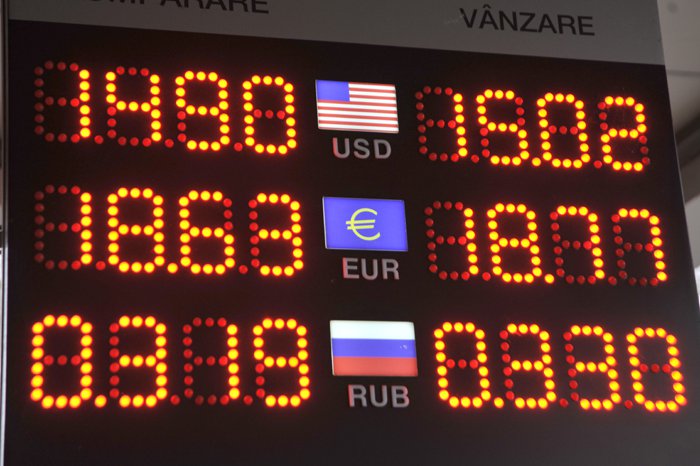Moldovan leu continues to depreciate
11:59 | 12.11.2014 Category: Economic
Chisinau, 12 November /MOLDPRES/ - Economic review by MOLDPRES
The national currency continues to depreciate against the dollar for the second consecutive week and hit a new historic low, after the National Bank of Moldova (BNM) today announced an exchange rate of 14.8964 lei to rising dollar. If the downward trend of the last week will continue, little time remains to reach a new psychological threshold of 15 lei.
The leu will very much depend on the development of the regional crisis, the economy in the Euro zone and Russia, but also on the evolution of exchange quotations of two of the biggest trading partners of Moldova, the Russian ruble and Ukrainian hryvnia, towards the end of the year. But, most likely, the regional crisis will continue and will seriously affect the economy, and the ruble and hryvnia will follow the crisis trend amid forecasts of slower appreciation of the dollar against the euro. Thus, the national currency will be under external pressure strong and will lose ground, analysts believe.
BNM does not see the exchange rate as an objective and does not make forecasts regarding the evolution of the leu. Some analysts believe, however, that after the peak reached on 14 April 2003 of 14.8069 lei to the dollar was exceeded on 3 November, the following psychological threshold could be 15.15, noting that "it does not mean that it will be reached."
Throughout 2013, the exchange rate of the national currency has lost 8.2 per cent of its value against the dollar, in nominal terms. Since the beginning of the year, depreciation has reached 14 per cent. "It is a normal economic adjustment to the regional circumstances. There was an adjustment of the exchange rate, which indicates a desire to rally the economy to regional conditions, "said BNM Governor Dorin Dragutanu.
And the situation in the region is unfavourable both for the Moldovan economy, and the national currency. The Russian ruble depreciated by 33 per cent early this year, the Belarusian currency by 12 per cent and the hryvnia by 56 per cent and continues to fall. The future does not seem to be more optimistic.
The BNM governor said he did not intend to waste foreign reserves to cushion the effects of what was happening in Ukraine and Russia and to calm the spirits on the local market. It would, in fact, be useless.
At the height of the 2008-2009 crisis, when the currency market was under enormous pressure amid the falling economy and a precarious financial situation, BNM sold nearly 600 million dollars domestically. The situation in 2014 is much calmer, more balanced, says BNM. Since the beginning of this year, the central bank sold 162 million dollars. And not in order to go against the trend, or to calm the spirits, but to convey what the situation is, and the level of foreign exchange reserves of 2.62 billion dollars is enough to keep the market in check. "We have the tools, a lot of ammunition and if a huge shock were to take place, we could intervene. We can respond not in order to remove the shock, but to get over that phase; the economy must adapt anyway", said Dragutanu.
Moldova has economic agents who are legally enabled to buy 5-6 million dollars on the market for objective needs in one day. Which is a relatively large volume for the daily average traded on the domestic market, which is about 17-20 million dollars, notes the governor.
On the other hand a smaller market is likely to become the target of backstage games. It is in the central bank's competence to closely follow what is happening on the market and intervene when appropriate and within necessary limits.
What the citizens, as well as the economic agents are asking themselves is whether the national currency depreciation would lead to rises in prices and to what extent. The leu depreciated by 14 per cent against the dollar since the beginning of the year, and the inflation rose by 3.1 per cent over the same period of time. Meaning that the price growth rate is much lower than depreciation. But energy companies can always ask for the revision of tariffs given that when setting the prices, a much smaller course had been taken into account.
It is almost impossible to anticipate how the leu will evolve under the uncertainties profoundly affecting economies in the region. The Central Bank of Russia adopted, on 10 November, the same monetary policy that BNM did in 2010, the managed float regime. The ruble's evolution depends on the market. The Central Bank eliminated the currency basket corridor and unlimited daily foreign exchange interventions in support of the rouble. "We will intervene only in the case of excessive speculation," said a representative of the Central Bank. Thus, the course liberalisation process was accelerated.
One day later, on 11 November, the hryvnia reached a historical maximum on the interbank market. Another aspect backing the hypothesis of the leu depreciation over the next period is the evolution of the US dollar against the euro, which has a positive development.
The foreign exchange market expectations, as well as that of the population are increasing, under the pressure of everything that is happening in the region. Quotations displayed by the exchange offices and commercial banks are higher than the official rate. The decline in exports, reduced imports and demand, puts pressure on the foreign exchange market under the conditions of a high demand for currency.
The situation can one day change. But so far there are no signs that would bring more peace to the foreign exchange market.

